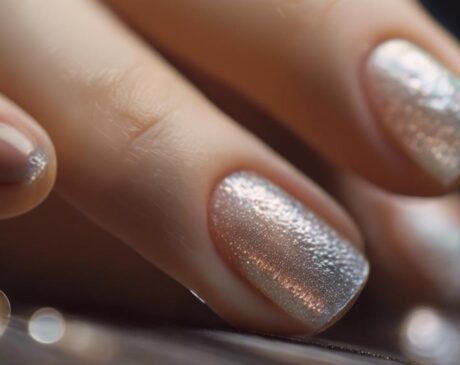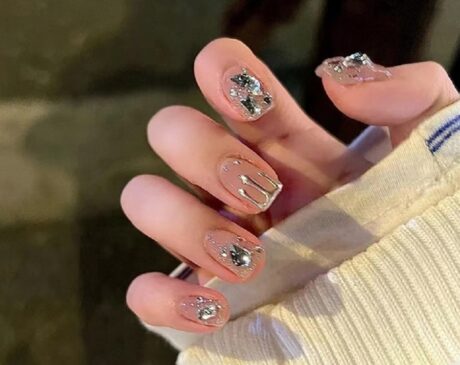Do nails need to breathe after press-ons?

There are some myths and misconceptions when it comes to nail care, especially regarding the use of press-on nails. It is widely believed that nails need to “breathe” and that pressing can suffocate them, leading to damage. Many people also believe that pressing weakens the nails, making them more susceptible to breakage or infection. However, it’s important to separate these rumors from the facts in order to understand how pressing products can actually affect nail health.
Understanding Nail Anatomy and Health
Nail composition: keratin and other components
Nails are primarily composed of keratin, a tough protein also found in hair and skin. This protein forms the hard surface of the nail, called the nail plate. Below the nail plate is the nail bed, rich in blood vessels and nerves, which gives the nail its pink color. Nails also contain small amounts of water and lipids (fats) that contribute to their strength and flexibility. Understanding this composition is essential to understanding how external factors, such as pressure, affect the nail.
How Nails Grow: The Nailbed and the Growth Process
Nail growth begins in the nail matrix, which is located beneath the skin behind the nail. Here cells multiply and harden, pushing out older nail tissue to form the visible part of the nail. The process is continuous and the nail grows at an average rate of about 3 millimeters per month. Factors such as age, health and diet can affect this growth rate. The idea that nails need to “breathe” is a misconception since they become inanimate tissue once they are removed from the nail matrix.
The Myth That Nails Need to Breathe
Debunking the Myth: A Scientific Perspective on Nail Breathing
Contrary to popular belief, nails do not need to breathe. Since nails are made up of dead cells, they do not require direct oxygen or nutrients. The idea that nails “breathe” is a myth. Oxygen and nutrients are supplied to the nail matrix and nail bed through blood flow, not through direct contact with the air. Therefore, covering your nails with nail polish or varnish will not “suffocate” them.
Effects of Pressure on Nails: Short and Long-Term Effects
Although presses do not suffocate nails, they may have other effects. In the short term, they may cause slight weakening or softening of the nail plate due to lack of exposure to air and moisture. However, this is usually temporary and reversible. Long-term effects may include thinning of the nail, especially if press-on products are not properly applied or removed. Improper use can also lead to fungal or bacterial infections if the nail bed is damaged. It is important to use press-on nails responsibly and allow time for natural nails to recover between applications.
Proper Application and Removal of Press-On Nails
Best Application Practices: Steps to Minimize Damage
To ensure that you minimize damage to your natural nails when applying press-on nails, follow the steps below:
- Preparation: Begin by thoroughly cleaning your nails. Use a nail polish remover to ensure there is no oil or residue on the nails.
- Buffing: Lightly buff the surface of your nails. This will create a slightly rougher surface that will help the adhesive bond better.
- Choose the Right Size: Choose a press-on that fits your natural nail perfectly. Avoid using ones that are too big or too small.
- Use an Adhesive: Use a good quality nail adhesive or bonding sheet. Apply a thin, even layer, making sure you don’t spill onto your skin.
- Placement: Carefully place the press-on piece on the nail and press firmly for a few seconds to ensure a firm bond.
- Avoid Immediate Contact with Water: Avoid immersing your hands in water for at least a few hours after application to allow the adhesive to set properly.
Safe Removal Techniques: A Way to Protect Healthy Nails
Safe removal of press-on is essential to maintain healthy nails:
- Soak in Warm Water: First soak your nails in warm soapy water for about 10-15 minutes. This helps loosen the adhesive.
- Use an Oil or Moisturizer: Apply cuticle oil or moisturizer to the edges of the press-on area. This further helps loosen them.
- Peel Gently: Starting from the edges, gently peel off the presser. Avoid applying pressure as this can damage the natural nail.
- Clean & Moisturize: Once removed, clean nails and apply nourishing nail polish or moisturizer.
Nail Care Between Press-On Applications
Nourish Your Nails: Moisturizers and Oils
It’s important to nourish your nails between coats:
- Regular Moisturizing: Use a moisturizing nail cream or cuticle oil daily to keep your nails and cuticles moist.
- Nutrient-Rich Oils: Oils such as jojoba oil, almond oil, or vitamin E oil are great for keeping nails strong and hydrated.
- Eat a Balanced Diet: Maintain a diet rich in vitamins and minerals to support nail health.
Allow Breaks: Recommended Breaks and Practices
Give your nails a break:
- Rest Period: After removing the pressure paste, allow your nails to rest for at least a week before reapplying.
- Nail Strengthener: During this time, use a nail strengthener or intensive nail treatment.
- Minimize Chemical Exposure: Wear gloves during household chores and avoid harsh chemicals or cleaners.
Alternatives to Pressed Nails
Healthier Nail Enhancements: Gels, Acrylics, and Other Options
For those looking for alternatives:
- Gel Nails: Gel polishes provide a long-lasting, durable manicure without the damage that acrylics can cause.
- Acrylic Nails: If choosing acrylic nails, make sure they are applied and removed by a professional to minimize damage.
- Dipped Powder Nails: This is a healthier option as it involves layering resin and powder for strength without exposure to UV light.
Natural Nail Care Tips: Maintain Your Nails Without Artificial Nails
Maintaining Natural Nails:
- Trim and File Your Nails Regularly: Trim and file your nails frequently to prevent breakage.
- Avoid Rough Nail Polish: Use non-toxic, breathable nail polish.
- Moisturize Your Nails: Moisturize your nails regularly with oil and avoid excessive exposure to water.
Summary of Key Points
Nail Anatomy and Health: Nails are made of keratin and do not need to “breathe” externally. They get their nutrients from the blood.
Myth Debunking: The idea that nails need to breathe and that pressure suffocates them is a myth. Proper application and removal are the key to maintaining healthy nails.
Proper Application and Removal: Following best practices for applying and removing press-on stickers can prevent nail damage. It is important to properly prepare your nails, choose the right size press-on, and use a quality adhesive.
Nail Care Between Uses: Nourishing and resting nails between uses is critical. Use moisturizers, oils, and nail strengtheners to keep nails healthy.
Alternatives: Gel, acrylic, and dip powder nails are all viable alternatives for those seeking options other than pressing, each with their pros and cons.
Final Thoughts on Nail Health and Pressing
For those looking to enhance the appearance of their nails, press-on nails are a safe and versatile option as long as they are applied and removed correctly. Understanding the anatomy of your nails and caring for your natural nails during use will ensure they remain healthy and strong. It’s important to listen to your nails’ needs and give them the care they deserve.
Frequently Asked Questions
How long should I wait between applications of Press-On Nails?
It is recommended to wait at least a week between applications. This rest period allows your natural nails to recover, which reduces the risk of weakening or damaging your nails.
Will Press-In Nails cause permanent damage to my natural nails?
Press-in nails are unlikely to cause permanent damage if used correctly. However, improper application or removal, overuse, and neglect of natural nail care can lead to problems such as thinning, weakening, or infection.
Are there any specific ingredients in nail care products to avoid?
Avoid nail care products that contain harsh chemicals such as formaldehyde, toluene, and dibutyl phthalate. These can weaken nails and cause irritation or other health problems.
How do I strengthen my nails after removing the compression piece?
Use nail strengtheners or strengthening treatments after removing the presser. Eat a diet rich in biotin and omega-3 fatty acids and regularly apply moisturizing oil to your nails and cuticles.
Is it necessary to see a professional about my nail health?
Yes, if you notice persistent problems such as discoloration, severe weakening, or signs of infection, be sure to consult a professional. A dermatologist or certified nail technician can provide tailored advice and treatment.




